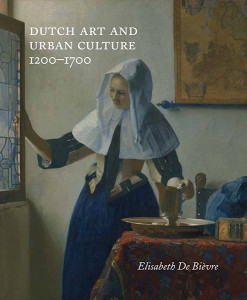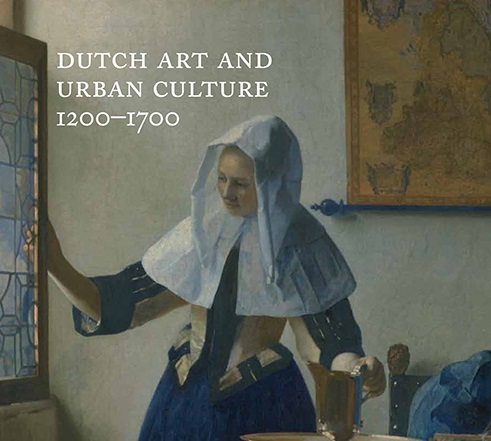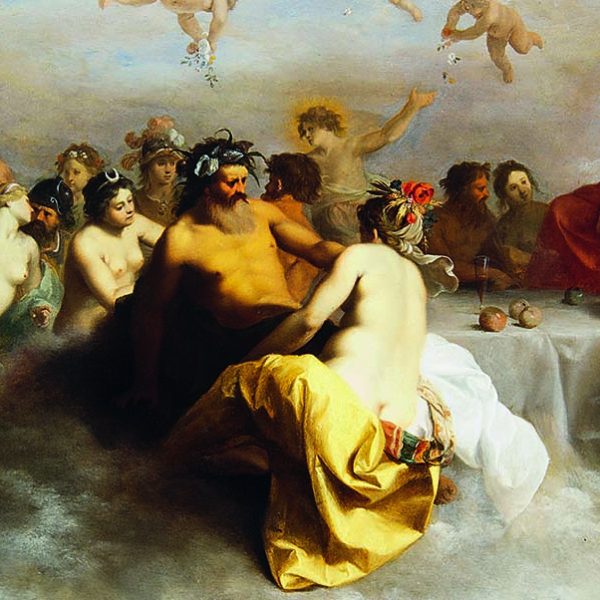Lowlands Travelogue: The Hague
 In the brand-new book Dutch Art and Urban Cultures, 1200-1700, author Elisabeth de Bièvre explains how distinct geographical circumstances and histories shaped unique urban developments in different locations in the Netherlands and, in turn, fundamentally informed the art and visual culture of individual cities. In seven chapters, each devoted to a single city, the book follows the growth of Amsterdam, Delft, Dordrecht, Haarlem, Leiden, The Hague, and Utrecht over the course of five centuries. By embracing the full gamut of art and architecture and by drawing on the records of town histories and the writings of contemporary travelers, de Bièvre traces the process by which the visual culture of the Netherlands emerged to become the richest, most complex material expression in Europe, capturing the values of individuals, corporate entities, and whole cities. In a series of posts, de Bièvre will offer a snapshot of each city as expressed through one or two representative artworks.
In the brand-new book Dutch Art and Urban Cultures, 1200-1700, author Elisabeth de Bièvre explains how distinct geographical circumstances and histories shaped unique urban developments in different locations in the Netherlands and, in turn, fundamentally informed the art and visual culture of individual cities. In seven chapters, each devoted to a single city, the book follows the growth of Amsterdam, Delft, Dordrecht, Haarlem, Leiden, The Hague, and Utrecht over the course of five centuries. By embracing the full gamut of art and architecture and by drawing on the records of town histories and the writings of contemporary travelers, de Bièvre traces the process by which the visual culture of the Netherlands emerged to become the richest, most complex material expression in Europe, capturing the values of individuals, corporate entities, and whole cities. In a series of posts, de Bièvre will offer a snapshot of each city as expressed through one or two representative artworks.
Elisabeth de Bièvre–
From the thirteenth century onward, The Hague grew into a major base for court and government. Never fortified, it cherished its exceptional medieval castle. With the revolt against a foreign ruler and the birth of the self-governing federal republic in the Northern Netherlands, members of one local family, the Orange-Nassaus, established primacy as military leaders. The Orange-Nassau princes made The Hague their headquarters around 1600. Their refined, colourful portraits on horseback continued a long, local tradition for imagery of rulers. Together with the urban vistas of the castle, these portraits were exploited for legitimizing the princes’ claims to central power. At the same time, the wall-less community attracted an unlimited number of down-and-outs, which inspired a new artistic genre. Colour-less (grisaille) paintings of the urban rabble executed with a rough brushstroke became a unique Hague specialty, now collected all over the world.

Pauwels van Hillegaert, The Princes of Orange and their Families on Horseback in front of the Hague Castle. c. 1621 (oil on canvas, 144.6 x 214 cm) The Hague, Royal Cabinet of Paintings Mauritshuis
Elisabeth de Bièvre is an independent scholar who has taught at the University of East Anglia Norwich, the University of California, Los Angeles, and University College London.
Further reading:
Dutch Painting by Marjorie Wieseman
Gabriel Metsu: A Life and Work A Catalogue Raisonné by Adriaan Waiboer
Rembrandt: The Late Works by Jonathan Bikker and Gregor J. M. Weber; With Marjorie E. Wieseman and Erik Hinterding, and contributions by Marijn Schapelhouman and Anna Krekeler
Man, Myth, and Sensual Pleasures: Jan Gossart’s Renaissance, The Complete Works Edited by Maryan W. Ainsworth; Maryan W. Ainsworth, Stijn Alsteens, and Nadine M. Orenstein; With contributions by Lorne Campbell, Ethan Matt Kavaler, Peter Klein, and Stephanie Schrader

























